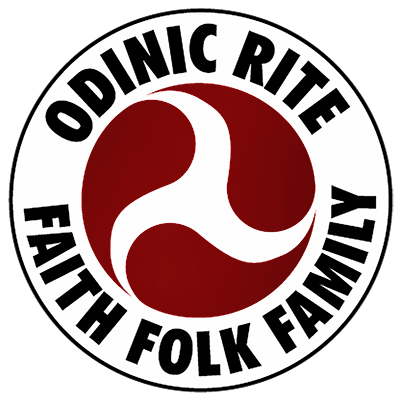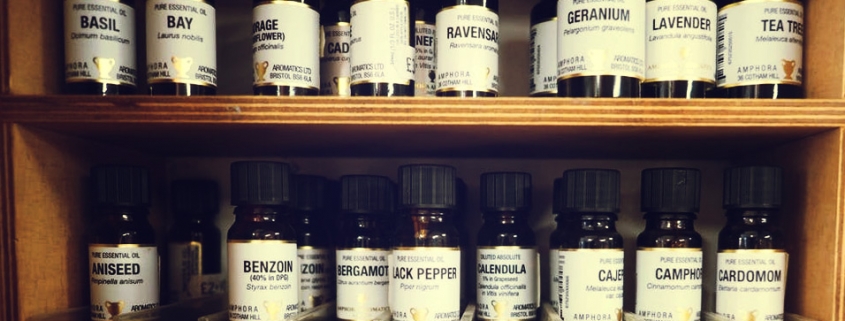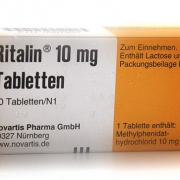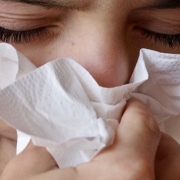Health by Essential Oils
By Lianne AOR
Essential Oils are everywhere; they are in fruit peels, the leaves of our herbs, flowers, nuts, tree barks, roots and even seeds. They hold the key to good health of which our ancestors have held for centuries. From cleaning our homes to treating family illnesses, these precious oils are the natural remedy. Essential oils are fragrant, concentrated liquids extracted from plants, each of which has a unique scent as well as constituents that can treat many different conditions.
A Bit of History & Lore
In Vedic literature from India that dates from around 2000 BCE, it lists over 700 substances using hers such as Cinnamon, Spikenard, Ginger, Myrrh, Coriander and Sandalwood. In the Indo-Aryan tongue, ‘atar’ means smoke, wind, odour and essence, and the Rig Veda codifies their use for both liturgical and therapeutic purposes. Later, during the Middle Ages, floors were strewn with aromatic plants and little herbal bouquets were carried as a protection against plague and other infectious diseases.(Lawless, 14 & 19)
Herbs that were sacred to our Anglo-Saxon ancestors were Mugwort, Plantain, Watercress, Viper’s Bugloss, Chamomile, Nettle, Sweet Cicely, Fennel and Crabapple. The charm of the Nine Sacred Herbs that Woden/Wotan/Odin is told to have discovered is listed in an 11th century manuscript called the “Lacnunga”.
The Nine Worts Galdor or Nine Herbs Charm (from the Anglo-Saxon poem “Lacnunga”) also listed in the book Leechcraft by Stephen Pollington.
Some of the most useful essential oils: (with scientific name)
Bergamot Citrus bergamia
Chamomile Chamaemelum nobile
Eucalyptus Eucalyptus globulus
Frankincense Boswellia carteri
Geranium Pelargonium graveolens
Lavender Lavandula augustifolia
Lemon Citrus limon
Patchouli Pogostemon cablin
Peppermint Mentha piperita
Rose (expensive) Rosa
Rosemary Rosmarinus officinalis
Sandalwood Santalum album
Tea Tree Melaleuca alternifolia
Ylang Ylang Cananga odorata
For medicinal uses, essential oils can be used by: bath, inhalation, massage, perfume, compress, vaporization, in lotions and shampoo and soaps or even applied neat (undiluted). Oils that are going to come in contact with the skin should always be diluted with a carrier oil such as Almond, Avocado, Coconut, Grape Seed, Jojoba, Macadamia Nut, Safflower and many others. Most oils have a multitude of purposes. For example; Lavender is good for acne, allergies, burns, dandruff, eczema, insect repellent, lice, ringworm, sunburns, sprains, rheumatism, asthma, bronchitis, whooping cough, abdominal cramps, colic, nausea, flatulence, dysmenorrheal, depression, headache, hypertension, insomnia, nervous tension, sciatica, shock, and vertigo.
SAFETY GUIDELINES:
- Always check the safety data for each oil before use
- Do NOT take essential oils internally, they may damage the internal lining of the digestive tracts and some oils are toxic taken internally.
- Store in dark bottles away from light and heat, and well out ofreach of children and pets.
- Some oils such as Bergamot, Cumin, Ginger, Lemon, Lime, Orange and Verbena are phototoxic, i.e. they cause skin pigmentation if exposed to direct sunlight.
- Some oils are not to be used during pregnancy such as Anise, Cedarwood, Cinnamon Leaf, Citronella, Clary Sage, Fennel, Juniper, Myrrh, Nutmeg , Tarragon, Thyme because they stimulate the uterus. (This is not complete list.)
- Avoid using Thyme on people with epilepsy.
- Avoid using Hyssop, Rosemary and all Sages on diabetics.
- Essential oils should not be used at home to treat serious medical or psychological problems.
- There are approximately 35 oils that are toxic and should never be used. Some of these are: Bitter Almond, Calamus, Chervil, Horseradish, Mugwort, Mustard, Oregano, Pennroyal, Sassafrass, Wintergreen, Wormseed and Wormwood.
Source: (Lawless, 26- 27)
BABIES AND CHILDREN
Always increase the dilution for babies and infants to at least half the recommended amount. For babies, avoid the possibly toxic and irritant oils altogether.
Infants 0-12 months: use only 1 drop of lavender, rose or chamomile (German or Roman) essential oil, diluted in 1 tsp carrier oil for massage of bathing.
Children 1-5 years: use only 2-3 drops of ‘safe’ oils, i.e. those which are non-toxic and non-irritant, diluted in 1 tsp carrier oil for massage or bathing.
Children 6-12 years: use as for adults but in half the stated concentrations.
Children over 12 years: use as directed for adults.
Source: (Lawless, 26)
Basic All Purpose Disinfectant Cleaner
Mix ¼ cup white distilled vinegar with 2 or more cups of distilled water (depending on how much vinegar you want to smell) and then add 5-10 drops of Tea Tree, Cedarwood, Lemon or Rosemary essential oils to a spray bottle and lightly shake before spraying.
Numerous medicinal and cleaning recipes can be found at the reference links below.
Excellent Reference Websites
Natural Healthy Home Cleaning Tips
Reputable, Affordable Online Ordering
Two of The Best Books on Oils
Lawlwss, Julia. Encyclopedia of Essential Oils: The Complete Guide to The Use of Aromatic Oils In Aromatherapy, Herbalism, Health and Well Being. 2002. Thorsons Publishing
ISBN-10: 0007145187
ISBN-13: 978-0007145188
Wormwood, Valerie. The Complete Book of Essential Oils and Aromatherapy: Over 600 Natural, Non-Toxic and Fragrant Recipes to Create Health – Beauty – a Safe Home Environment. 1993. New World Library Publishing
ISBN-10: 0931432820
ISBN-13: 978-0931432828










Leave a Reply
Want to join the discussion?Feel free to contribute!